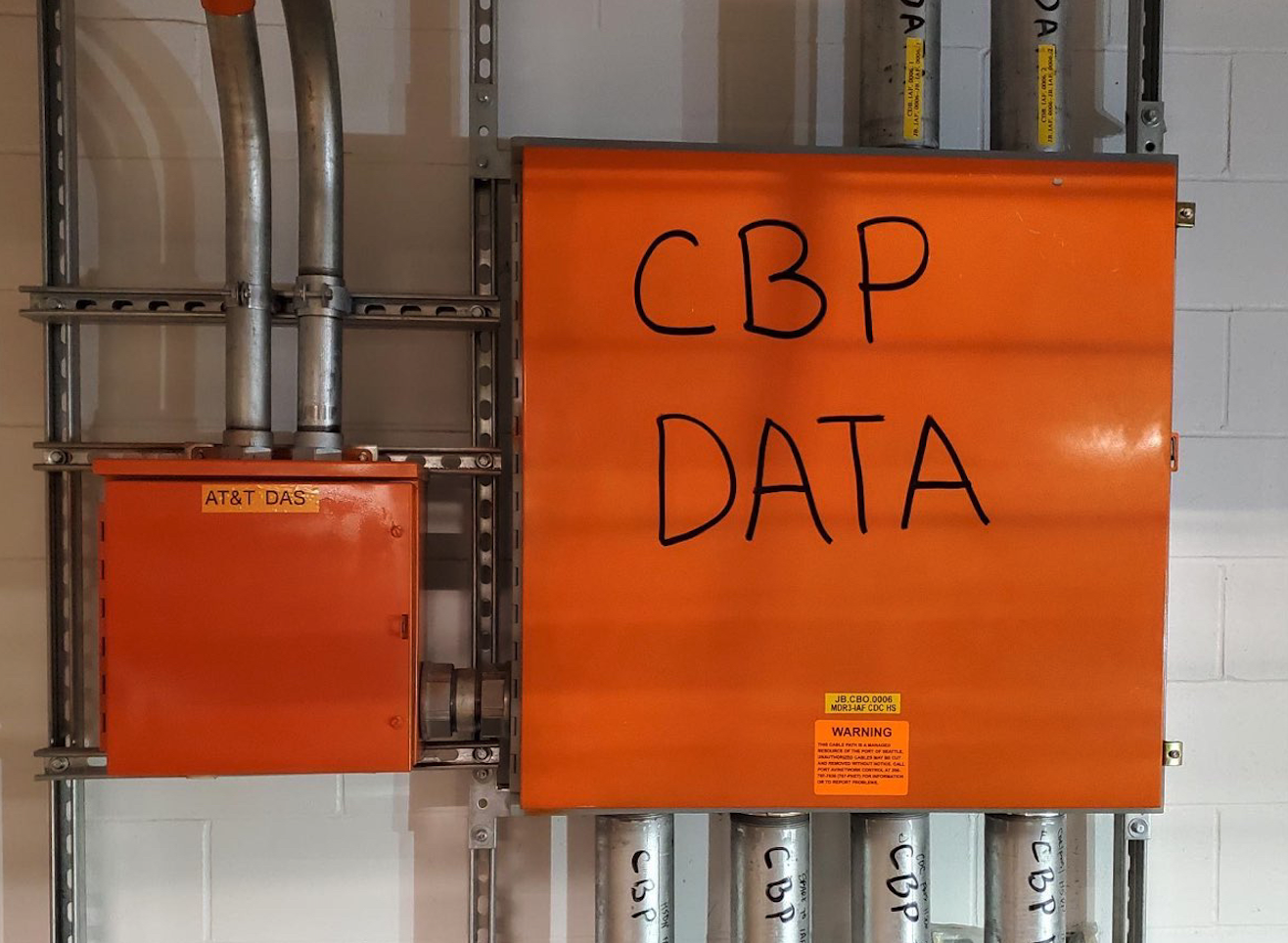- cross-posted to:
- tech@kbin.social
- cross-posted to:
- tech@kbin.social
Summary
-
Customs and Border Protection (CBP) is increasing its target for scanning passengers with facial recognition as they leave the U.S. from 40% to 75%.
-
The new goal will be implemented at the end of this month.
-
CBP is changing its metric for measuring progress from the percentage of flights that have at least one biometrically processed traveler, to the percentage of passengers who are biometrically processed.
-
CBP says that the change in metric is more accurate and provides a more complete picture of how robust biometric exit processing is on a national level.
-
The Congress-mandated goal of CBP is to have 97% or greater biometric exit compliance.
-
Airlines are increasingly using facial recognition systems to confirm travelers when boarding aircraft.
-
Passengers who do not want to participate in facial recognition can opt out, but they may be asked to present travel documents or other proof of identification, and in some case, fingerprints.
-
CBP says that it will only store facial images for no more than two weeks and that it will share entry and exit data for law enforcement.
The article also mentions a case where a privacy attorney was told by airline staff that she had to participate in facial recognition, even though she had a right to opt out. This suggests that there may be some confusion among airline staff about the rules surrounding facial recognition.
Interesting Passages
A June 2017 CBP document explains its “Biometric Exit Process” for passengers: “All travelers are required to submit to CBP inspection upon exit. Facial images will be matched and then stored for no more than two weeks in secure data systems managed by the U.S. Department of Homeland Security in order to further evaluate the technology, ensure its accuracy, and for auditing purposes. In lieu of facial images, travelers may be asked to present travel documents or other proof of identification, and in some cases provide fingerprints.” That document adds that it could share traveler exit and entry data with other government agencies “if the situation warrants, for law enforcement purposes.”
It seems likely CBP will meet its goal for biometrically-processing 75 percent of passengers. In 2021 I obtained a cache of documents related to the airline JetBlue’s piloting of facial recognition systems. Already back then, JetBlue said it had seen more than 90 percent of customers participate in biometric boarding when it was available.
Facial images “stored for no more than 2 weeks” just means that they have 2 weeks to transfer the data to another agency with no storage or transfer requirements.
To casually let the UK government spy on that data and store it forever.
This is truly terrifying. One big thing the US always was proud of is no “papers please” moments in traveling around, including exiting the country.
Yeah that stopped on 09/12/2001.
What happened on the 9th December 2001?
mm/dd/yyyy in USA
Pretty sure they know and are making joke.
YYYYMMDD format wins again
?
I’m not at all a fan of this, but surely presenting your papers when crossing an international border is not a new thing. I’m actually pretty sure I’ve done this facial scanning when traveling in the EU, and in that case I assumed that it was to detect people who don’t match the passport they’re holding, which actually seems like a pretty valid law enforcement thing to do. They already know who you are.
I.e. I agree this is a bad thing but disagree with this particular reason for disliking it. Among other reasons, it surely won’t remain only at international borders once the US has gotten some familiarity with the technology.
In the US historically there was no paperwork, checking, when LEAVING the country. i.e. you just drive into mexico and stop for mexican customs, but not us customs.
… because for most travelers, it’s already been provided via APIS to the CBP. Like I say, I think the main motivations are (1) making sure that the person traveling matches the identity that was provided to and checked by the computer, which seems legit and (2) trialing the system so they can expand it beyond the international border, which seems far too worrisome to justify the small benefit of #1.
Driving checkpoints I have no idea; I was honestly thinking only in terms of air and sea travel which is a little more formalized. Are they talking about scanning people’s faces when they drive to Mexico also?
Because in the US there is no requirement to be vetted to leave the country air ports have no international / domestic division. So its not unheard of for someone to buy two tickets, a domestic one with their name to get past security, and a international one with a random identity, that is used to take the international flight.
The biometric scanners are probably trying to catch people doing that
What nonsense is this. The airline checks your ticket against your passport prior to departure. If airlines board anyone without the proper passport or visa and are rejected on arrival, it’s the airlines’ responsibility to fly you home on their dime.
No airline lets you book an international ticket and board it without a valid passport and appropriate valid visas that match the name on the ticket.
You can of course fly domestically without ID (even getting through TSA, it’s onerous but TSA has a process for that).
Your information on that ticket is also electronically sent by the airlines to the next port of entry for a huge percentage of countries.
If that doesn’t match the passport you have, you’re going to have problems at immigration wherever you’re going.
You can see this is action on any boarding pass you get for international travel.
It will say something like DOCUMENT CHECK REQD or DOCS OK right on your boarding pass.
Yeah, we’ve had biometric passports in the UK and Europe for years. I’m in the process of getting a Visa for a trip to India and their requirement is that you have a machine readable passport. This is just the IS catching up tech wise to the rest of the world.
Yah I thought so. There are enough problems with facial recognition, and the US is such a unique animal in terms of its eagerness and ability to spy on its citizens, that I actually do think this is a problem, but I’m seeing all these people in this thread saying “This is a disaster! They’ll be able to identify you now, when you cross the border!”
Like buddy I have some bad news for you
It’s literally one of the few times it’s legitimate to be checked, unless you’re one of the proper nutty “borders shouldn’t exist” types, lol.
CBP must be abolished
How do I opt out of this horseshit?
They’re trying to push it up to 97% compliance, apparently mandated by Congress. So, generally, don’t cross the US border. Here’s an article from EFF: https://www.eff.org/deeplinks/2017/08/end-biometric-border-screening
DHS recently took the alarming position that “the only way for an individual to ensure he or she is not subject to collection of biometric information when traveling internationally is to refrain from traveling.”
Don’t fly if you care about your privacy
I mean, I don’t know where you’re from, but at least in the US, that’s been known for a while. To go anywhere you have to present photo ID, have your bags x-rayed, have somebody physically inspect your shoes, electronics and medication, and pass through a metal detector, if you’re lucky…but more than likely a millimeter-wave scanner and possibly a pat-down.
Short of flying private/charter, that’s pretty much the only option for commercial flight.
You can sometimes save yourself the hassle and take a train or a bus (or more likely a combination of several), if you don’t mind taking forever, and trains usually costing more than flights. Or just do what any other good red-blooded American would and take your pickup truck.
What the hell do these guys get out of it? Does someone at CBP jerk off to thinking about the amounts of personal data they collect? How do they use it? Or is it just a database of people’s data “in case we need it in the future :3”? wtf…
From a practical perspective? They could eventually cross reference the exits to arrivals, automatically flagging those who have overstated their visa (or, more specifically, automatically clearing those who have left). The data (exit data) is generally useful for all sorts of mundane statistical work. From an automation standpoint it’s both cost effective and time saving. Anyone who’s queued up in an hour+ line to get through border patrol will attest that the prices can be infuriatingly slow.
Of course, that the data can be used for non-official or privacy-adverse uses doesn’t make the collection ok, but that fact also doesn’t mean that the data isn’t useful for its overly intended purpose (automated tracking of everyone who leaves)
They could eventually cross reference the exits to arrivals
Why isn’t a passport enough for that? Each one has a unique ID number, why not use that as reference but instead rely on privacy-invasive biometric data collection? You can just tap your passport on a scanner and it’ll read the machine readable part on both arrival and departure, then have facial recognition/fingerprints be verified if you wanna be 100% sure the passport holder is who they say they are. Many e-passports have this data embedded inside them on a chip, thought that was the whole point.
Your passport contains biometric data (your photo - not as complete as a depth scan or multi-spectral image, but still biometric).
There are two (well, threeish, legitimate) reasons for biometric. First, it is currently harder to fake. Digital passports are difficult but not impossible and non-digital are relatively easy, especially for state actors. Second people are stupid (or unlucky) and lose their passports, which leads to a shit-ton of paperwork to fix. Third, and this is really the rule for which lost docs are a sub-problem, efficiency. Even the cheapest front-line human costs about $100 an hour, including management, training, benefits, etc and I’ve yet to meet an international (or domestic) traveler who enjoys waiting in hour+ lines to get through passport control. Less contact time / zero friction interfaces are both better for passenger attitude and cost efficiency.
Until we stop the practice of drawing imaginary lines on the planet and regulating which side each person is allowed to be on, nearly every travelers and pretty much all the boarder control apparatus is going to want to spend as little time and money on one another as possible.
Until we stop the practice of drawing imaginary lines on the planet and regulating which side each person is allowed to be on, nearly every travelers and pretty much all the boarder control apparatus is going to want to spend as little time and money on one another as possible.
Amen to that
Airlines increasingly use facial recognition systems for when travelers board aircraft. Generally, a passenger looks into a camera, the system compares their face to images on file, and confirms if the passenger is who they claim to be.
I’m very confused by this. What is the justification for taking another picture? Usually government ID/passport already has a picture on it.
Unless they are pushing for full automatic ID confirmation (which is a very bad idea), the people at the boarding gate could just confirm with their eyes, no?
In addition, I could see this especially concerning for international students, foreigners and visa workers. The mentality is not to disturb the system and it is highly likely that they will submit without a fight. Those without a law background like in the article are less willing to stand there and argue.
I fear this will further create conformity for those around before take off. No one wants to be the little bugger that makes a scene or holds off the line. Plus, this will further foster such submissive mentality for international travelers (eg their friends, their family) to expect and submit to these intrusive practices without question or the possibility to repeal. Slowly this adds onto the 75% target, and then it will keep growing, to 97%, then to 100% …
With airlines, it still seems to be voluntary and justified by convenience. (https://www.businessinsider.com/american-airlines-facial-recognition-boarding-dfw-aviation-trend-2019-8)
For boarding-crossing trip related to CBP, it seems you can still explicitly opt-out, possibly incurring inconveniences. But it maybe less voluntary in the long run (also because of inconveniences.)
For foreigners needing to travel in-and-out of the US, they will always be more willing to submit to the whims of Airport/US authorities.













